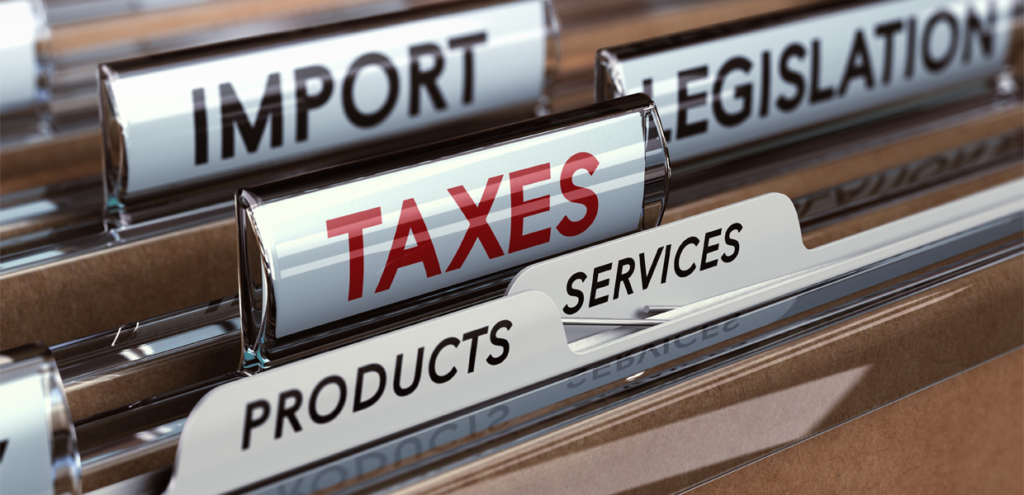A Practical Guide for Businesses Navigating Global Duties and Tariffs

Whether you’re sourcing products from Asia, shipping into Europe, or selling to North America, import taxes—including duties, tariffs, and value-added taxes (VAT)—can significantly affect your product pricing and profit margins. Understanding how these taxes work in different regions is not just a regulatory requirement; it’s a key part of building a competitive sourcing strategy.
At ProductSourcing-Agent.com, we help businesses simplify global sourcing by anticipating hidden costs like import taxes and customs fees. This guide breaks down how import taxes vary by region and how sourcing agents can help minimize surprises at the border.
Why Import Taxes Matter in Global Sourcing
Import taxes can include:
- Customs duties: Based on HS codes and product value
- VAT/GST: Charged on imports in many countries
- Excise taxes: Applied on specific items like alcohol, tobacco, fuel
- Anti-dumping duties: Imposed to protect local industries from cheap imports
A lack of understanding in this area can lead to:
- Unexpected cost increases
- Customs delays
- Fines or seizures
- Lost profitability
1. North America: United States and Canada
🇺🇸 United States
- Import duty: Ranges from 0% to 37.5%, average around 5.63%
- Calculation: CIF (Cost + Insurance + Freight) value × duty rate
- No VAT, but state sales tax may apply post-import
- Free Trade Agreements: USMCA, CAFTA-DR, and others
🔎 Use the U.S. Harmonized Tariff Schedule to check HS codes and rates.
📌 Tip: For shipments under $800, use Section 321 to avoid duties via express clearance.
🇨🇦 Canada
- Import duty: Often 0–8.5%, depending on origin and product
- GST (Goods and Services Tax): 5% federal, plus PST or HST regionally
- Valuation: CIF + duty + brokerage fees
Canada also uses HS codes aligned with WCO standards. Check with the Canada Border Services Agency (CBSA) for details.
2. Europe: EU, UK, and EFTA Countries
🇪🇺 European Union
- Common External Tariff (CET) across member countries
- VAT ranges from 17% (Luxembourg) to 27% (Hungary)
- Duties based on CIF + duty rate + VAT
- Intrastat reporting needed for intra-EU trade
Use the EU TARIC database to calculate applicable tariffs and codes.
🇬🇧 United Kingdom (Post-Brexit)
- Tariffs aligned with the UK Global Tariff (UKGT)
- Import VAT is 20%, usually recoverable by VAT-registered businesses
- Freeports allow duty deferral
Visit the UK Trade Tariff Tool for specifics on duty and VAT rates.
3. Asia-Pacific: China, ASEAN, Australia, India
🇨🇳 China
- Duties vary from 0%–50%
- VAT on imports: 13% (standard), 9% for certain goods
- Consumption tax: Applied to luxury goods, alcohol, tobacco
China offers export VAT rebates, which can benefit exporters. For inbound goods, check the China Customs website for updated HS codes.
🇮🇳 India
- Basic Customs Duty (BCD): 5% to 10%
- IGST (Integrated GST) on imports: 18% or higher
- Social Welfare Surcharge: 10% on the BCD
- Use the ICEGATE portal for tariff lookup.
🌏 ASEAN (Vietnam, Thailand, Indonesia, etc.)
- Lower duties between member nations under the ASEAN Free Trade Area (AFTA)
- Imports from outside ASEAN still face:
- VAT (e.g., Vietnam 10%, Indonesia 11%)
- Customs clearance delays
- FTAs with China, Korea, Japan reduce rates with correct Certificates of Origin (Form E, Form AK, etc.)
4. Middle East & Africa
🇦🇪 United Arab Emirates
- 5% customs duty, calculated on CIF value
- 0% to 5% VAT, depending on the product and importer status
- Free Zones allow import without duty if goods remain inside the zone
🇿🇦 South Africa
- Uses the SACU tariff schedule
- Import VAT: 15%
- Some goods attract additional excise (e.g., vehicles, electronics)
Middle Eastern countries often require pre-shipment inspections and SASO/COC certificates.
5. Latin America
🇧🇷 Brazil
- Import duty (II): Varies 0%–20%
- Additional taxes:
- IPI (Excise Tax)
- PIS and COFINS (social contributions)
- ICMS (state tax)
Brazil’s total import tax burden can exceed 60% in some cases.
🇲🇽 Mexico
- Standard import duty: 0% to 35%
- VAT: 16% nationally, 8% in border regions
- Participates in USMCA for preferential trade with the U.S. and Canada
Tips for Sourcing Agents and Importers
| Action | Why It Matters |
|---|---|
| Classify goods accurately | HS code misclassification is a common audit trigger |
| Understand Incoterms | Affects who pays duties and when |
| Use Free Trade Agreements | Reduces or eliminates duty with correct documentation |
| Plan for taxes in landed cost | Import taxes can turn a good deal into a loss |
| Work with local customs brokers | They navigate region-specific regulations |
Final Thoughts: Smart Sourcing Requires Tax Clarity
Import taxes are complex, but not impossible to manage. With the right planning, sourcing agents can help their clients:
- Predict and minimize import costs
- Select optimal sourcing destinations
- Avoid customs delays or penalties
At ProductSourcing-Agent.com, we guide clients through region-specific tax frameworks and ensure landed costs are fully transparent from the beginning.